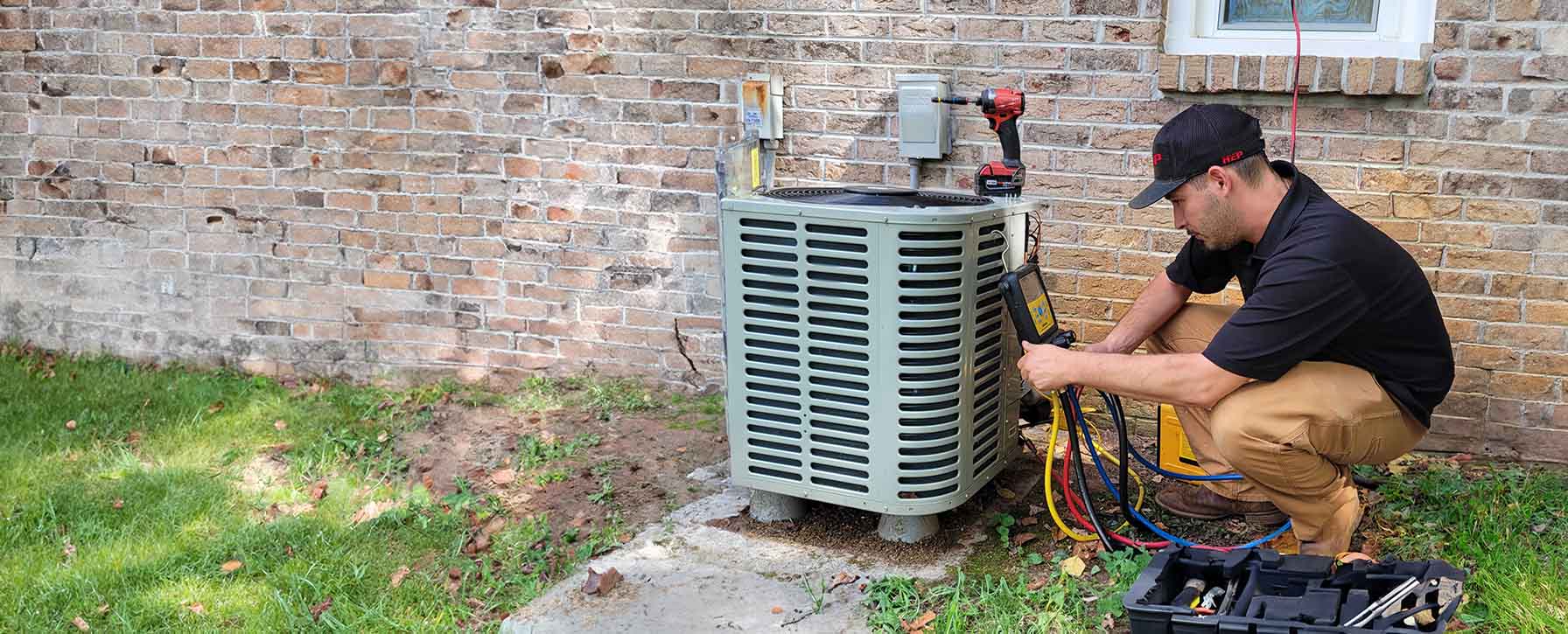

Heating System
Your trusted partner for professional home services. Quality workmanship, guaranteed satisfaction.




- HEP
- Heating System
Heating System | Heat Repair | Heating and Air Conditioning | Dayton
When cold Ohio nights creep in and your furnace falters, HEP’s seasoned technicians swoop in with fast, transparent service that warms every corner of your home. We troubleshoot every make and model, arriving in fully stocked vans so most fixes happen on the first visit—no shivering while you wait for parts. From strange rattles and skyrocketing energy bills to complete system shutdowns, our pros pinpoint the problem, walk you through the solution, and back it all with straightforward pricing.
Homeowners across Dayton trust us for reliable heat repair because we treat comfort like an emergency, not an errand. Call, click, or chat 24/7 and a live local dispatcher will have a NATE-certified specialist headed your way, ready to restore cozy air, healthier indoor quality, and peace of mind—all before the coffee finishes brewing.
FAQs
What are the most common signs that my heating system needs professional repair in Dayton?
Watch for uneven temperatures between rooms, short cycling (system turns on and off rapidly), unexplained increases in your utility bill, banging or squealing noises, persistent burning or musty odors, and lukewarm or cool air from the registers. Any of these symptoms can indicate failing components such as a cracked heat exchanger, worn blower motor, clogged filter, or thermostat issues. Addressing problems early prevents bigger, more expensive failures and ensures your home stays safe and comfortable during Dayton’s cold snaps.
How quickly can you respond to a heating emergency, and what areas around Dayton do you cover?
We provide true 24/7 emergency service—including nights, weekends, and holidays—and can typically have a certified technician at your door within two hours of your call. Our dispatch center tracks real-time technician locations so we can send the closest available crew. We serve the entire Dayton metro region: Kettering, Beavercreek, Centerville, Huber Heights, Vandalia, Miamisburg, Fairborn, Oakwood, and surrounding communities in Montgomery, Greene, and Warren counties.
What types and brands of heating equipment can your technicians repair?
Our NATE-certified technicians are trained to diagnose and fix gas furnaces, oil furnaces, electric furnaces, heat pumps, dual-fuel systems, boilers (steam and hot-water), and ductless mini-split heaters. We stock common parts for all major brands—Carrier, Trane, Lennox, Rheem, Bryant, Goodman, York, Amana, and more—so most repairs can be completed on the first visit. If your unit is still under manufacturer warranty, we’ll process the paperwork to help you maximize coverage.
How much does a typical heat repair cost, and do you provide upfront estimates?
Our service call/diagnostic fee is $79, which is waived if you authorize the recommended repair. Minor fixes such as replacing a capacitor or ignitor usually range from $150–$300. Mid-level repairs—blower motor replacement, inducer motor replacement, or control board issues—often fall between $350–$750. Major component failures, such as a cracked heat exchanger, can exceed $1,000. You’ll receive a written, flat-rate estimate before any work begins, and we accept major credit cards, offer financing options, and honor manufacturer parts warranties.
Is it better to repair or replace an older furnace that keeps breaking down?
A good rule of thumb is the 50-percent rule: if the repair cost is more than half the price of a new high-efficiency furnace and the unit is over 10–15 years old, replacement usually makes more economic sense. Modern ENERGY STAR® furnaces can deliver 15–30% savings on utility bills compared with equipment installed early in the 2000s. During your service call, we’ll evaluate the age, efficiency, safety, and remaining life of your current system and provide side-by-side repair vs. replacement estimates so you can make an informed decision.
How can I prevent future heating breakdowns during Dayton’s cold winters?
1. Schedule a professional tune-up every fall to clean burners, check safety controls, lubricate motors, and inspect the heat exchanger. 2. Replace or clean air filters every 1–3 months to maintain airflow and reduce strain on the blower motor. 3. Keep supply and return vents unblocked by furniture or rugs. 4. Install a programmable or smart thermostat to reduce wear by running the system only when needed. 5. Enroll in our Comfort Club maintenance plan, which includes bi-annual inspections, priority scheduling, discounted repairs, and extended part warranties. Preventative care is the easiest way to avoid unexpected outages and keep your heating system operating at peak efficiency all season.